The Bowes Museum
by Alasdair Carter
In southwest County Durham you will find the historic market town of Barnard Castle. A thriving, bustling little town steeped in history from the castle on cliff top to the marketplace. This town dates back to Roman times and has been host to a number of famous names such as Charles Dickens in February 1838. However the real jewel in this town's crown has to be the Bowes Museum.
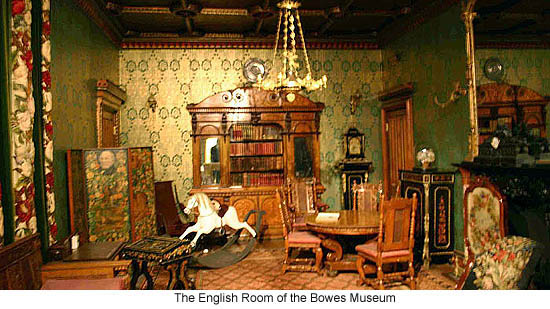
The Building
As you drive through the main gates of the museum's grounds, the first impression you get is the sheer scale of the building itself.
Building work started with a ceremony on 16th November 1869 when Josephine Benoite, Countess of Montalbo placed the first stone. Many think the building was a large country residence, however it was designed by the French architect Jules Pellechet, as a purpose built public museum and art gallery.
By 1876, much of the stonework had been completed, with the windows and main tower left to be completed. You can also see in the photograph that the land only gradually slopes away from the building in stark contrast to the finished building. Many tonnes of material had to be removed to create the twenty feet drop from the main entrance level to gardens below. Ever thrifty in their use of materials, the builders used this to level off other areas of the site to provide flattened formal grounds.
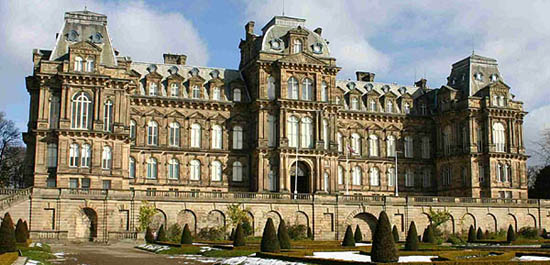
Twenty three years after the laying of that first stone, the museum opened to the public for the first time in the Spring of 1892.
John and Josephine Bowes
The Bowes Museum represents the love story of John & Josephine Bowes and their shared passion for art, collecting and design.
John Bowes had a passion for theatre. He was known for performing in amateur productions and seeking inspiration to write his own productions he made several visits to Paris, France. It was during one of these visits he became a partner in Theatre des Varieties, which specialised in comedies from its address on the Boulevard Monmartre in 1846. Here, he met Josephine Benoite a watchmaker's daughter, who was working as a comedy actress with the stage name of Madame Delorme. The couple lived together in Paris with Josephine retiring from the stage in 1851. The theatre had been a successful business proposition however the French revolution of 1848 reflected the turbulent times of the country. John sold his interest in the theatre ten years later and returned to England.
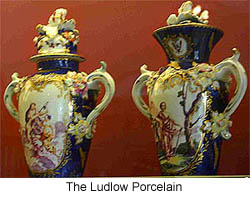
The Collections
The museum is laid out on three levels. The ground floor houses the main reception area, the museum shop, Cafe Bowes and the Archaeology and Local History areas, as well as several staff only areas.
The Archaeology and Local history sections hold a diverse range of artifacts. At one end of the spectrum is a collection of 'tools of the trade'. Gruesome looking surgical instruments, shoemaker's and carpenter's tools give an insight into how brutal life could be for the early settlers of County Durham. A long corridoor to the Roman area has photographs of area, from the stern looking Victorian gentlemen of the local masonic lodge, to the ladies around the bandstand in the front gardens at the museum opening. On entering the Roman room you are greated by a life size Roman Auxiliary. Most people think that the soldiers used by the Roman Empire were all Legionaires, however there were strict requirements of birth and heritage to become a Legionaire, so many were employed in the Auxiliary. The Roman collection of artifacts is well presented and visitors are actively encouraged to touch the 2000 year old Amphfora, a large vase often used to transport wine.
Going up the main stairs to the first floor we reach the level of the museum that houses European Decorative Art, The English Period Rooms, The John & Josephine Story Galleries as well as some general exhibition areas.
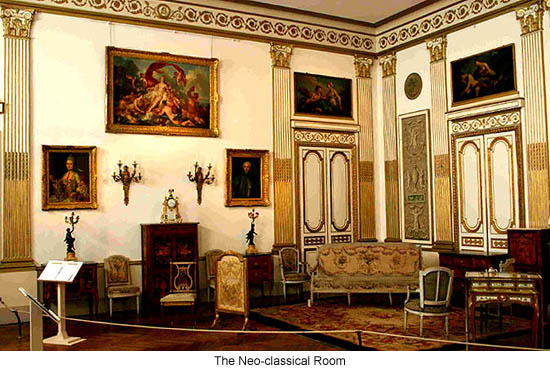
Turning left when reaching the first floor we enter the European Decorative art area that includes rooms furnished with some of the finest materials available, as well as porcelain created by Lady Ludlow.
The first room is from the Neo Classical period (1760-1790) which drew inspiration from Roman and Greek art and architecture, achieving great popularity in both England and France.
This leads us into a Rococo (1720-1770) styled room. The Rococo style took a light hearted approach, especially when compared to Baroque and appeal to those people seeking novelty and diversion in their designs. It features 'C' and 'S' shaped scrolls and was heavily inspired by nature.
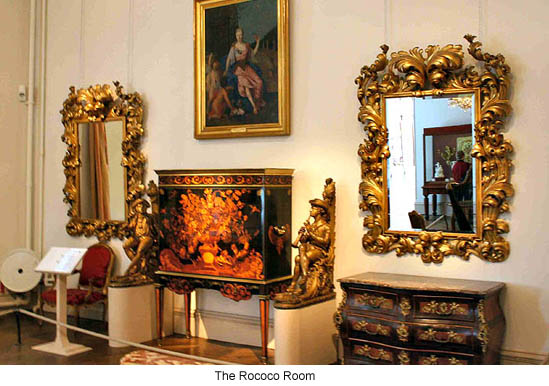
Following through this room we reach the Lady Ludlow Collection of English Porcelain. Born in 1862, Alice Sedgewick Mankiewicz, of Polish descent she lived in London with her mother. She became Lady Ludlow in 1919 when she married Henry, the 2nd Baron Ludlow. She was a prominent London society figure, a personal friend to the wife of King George V, Queen Mary, and started her porcelain collection in 1910 with the purchase of two figures of birds. Her collection rapidly expanded and by 1932 she had over five hundred pieces catalogued, many from leading 18th Century marques, Chelsea, Bow and Derby and Worcester. Her particular favourites were highly decorated pieces and there are many fine examples displayed in this room.
The English Period rooms take you on a journey back through history, whilst being a shining example of reclaimed materials. Much of the panelling would have ended up on the bonfire had it not been rescued to resconstruct the rooms in the museum. The series of rooms, including a traditional long gallery show the interior styling that was popular from 1500-1800's. Many of the pieces may be examined closely, from the Tudor fireplace to the regency chairs. The long gallery was originally a covered walk way that connects one wing of a house to another. They tended not to have any furniture at all as they were often used for sports or dancing. Later furnishings were added as their use changed to general entertaining areas.
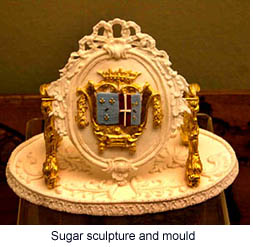 On leaving the English period rooms sugar sculptures with their moulds and tools are displayed. Sugar sculpture was a feature of banquets given by nobility or royalty from the late medieval period to the late 1800's. Two types of material were used; sugar paste, a plastic material made from sugar and gum tragacanth, and cast sugar, which involved pouring hot syrup into ceramic or wooden moulds. Combining the two methods allowed finely detailed work to be created. The exhibits on display represent some of the finest examples of its type from the 1700's. On leaving the English period rooms sugar sculptures with their moulds and tools are displayed. Sugar sculpture was a feature of banquets given by nobility or royalty from the late medieval period to the late 1800's. Two types of material were used; sugar paste, a plastic material made from sugar and gum tragacanth, and cast sugar, which involved pouring hot syrup into ceramic or wooden moulds. Combining the two methods allowed finely detailed work to be created. The exhibits on display represent some of the finest examples of its type from the 1700's.
The general exhibition spaces on the first floor had a collection of Henri de Toulouse-Lautrec on display, however this is a travelling exhibition so will be replaced in time.
The second floor houses the ceramics gallery, the picture galleries, the music room and the Jubilee Room.
The collection housed in the ceramics gallery is one of the most important collections of European ceramics in the United Kingdom. The ceramics on public view occupy three complete rooms, with pieces dating from the 1600's. The first room you encounter also includes some activities for children with the jigsaws where children reassemble broken pieces proving particularly popular. The 1700's saw a trend of fruit, vegetables and other foods being depicted in ceramics and there are a number of exhibits like the Dish of Eggs from 1770 that have been hand painted under a tin glaze. Other factory marques, like an impressive Meissen vase were acquired by John Bowes himself whilst visiting factories overseas. He was particularly keen that English craftsmen and manufacturers should see examples of the finest available.
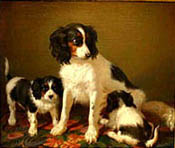 The pictures galleries take you through five hundred years of art from the Renaissance to the late 19th Century and range from the smallest miniture to huge 20ft canvasses. The subjects of the pictures reflect their times, with biblical themes such as Belshazzar's Feast, rugged rural and urban landscapes, mythical figures and also the more familiar subjects of dogs, such as Filipio Palizzi's Spaniel with two puppies painted in 1848. The committed art lover will not be disappointed by the range of pictures from the French, Belgian, Italian & English schools that are displayed. While you view and study the pictures on display, children can dress in a range of costumes made available, becoming one of the characters displayed on the wall. The pictures galleries take you through five hundred years of art from the Renaissance to the late 19th Century and range from the smallest miniture to huge 20ft canvasses. The subjects of the pictures reflect their times, with biblical themes such as Belshazzar's Feast, rugged rural and urban landscapes, mythical figures and also the more familiar subjects of dogs, such as Filipio Palizzi's Spaniel with two puppies painted in 1848. The committed art lover will not be disappointed by the range of pictures from the French, Belgian, Italian & English schools that are displayed. While you view and study the pictures on display, children can dress in a range of costumes made available, becoming one of the characters displayed on the wall.
The Jubilee Room is a less formal area with interactive games for the children, sofas are also provided in an area where visitors are encouraged to relax and read.
The Silver Swan
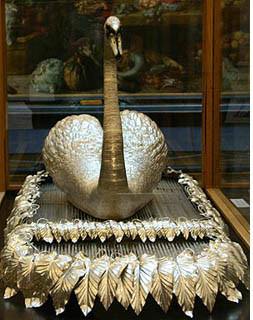 The highlight of any tour at the Bowes, has to be the performance of the Silver Swan. Far from being a static exhibit, the swan is an early example of an automaton and beneath the life size silver exterior is a complex mechanical device that controls all the swan's movement, linked to music box. The mechanism itself is believed to have been made by John Joseph Merlin and was originally designed to operate as a 'coin in the slot' entertainment machine. However, in order to preserve the original workings, the coin slot has been removed and a member of staff at the museum will operate the swan only twice every day. Housed on the top floor of the museum a crowd normally gathers ten minutes before each performance at Noon and 3pm, with a hush decending on the room so the music box can be heard to best effect. The highlight of any tour at the Bowes, has to be the performance of the Silver Swan. Far from being a static exhibit, the swan is an early example of an automaton and beneath the life size silver exterior is a complex mechanical device that controls all the swan's movement, linked to music box. The mechanism itself is believed to have been made by John Joseph Merlin and was originally designed to operate as a 'coin in the slot' entertainment machine. However, in order to preserve the original workings, the coin slot has been removed and a member of staff at the museum will operate the swan only twice every day. Housed on the top floor of the museum a crowd normally gathers ten minutes before each performance at Noon and 3pm, with a hush decending on the room so the music box can be heard to best effect.
The swan itself was bought in 1872 by John Bowes for 5000 French Francs, about £200 UK pounds, from the Paris based jeweller, Briquet. The first traces of the swan in official records are in the early 18th Century, in records relating to a travelling exhibition of clockwork pieces owned by the London based showman James Cox. "A swan as large as life formed of silver, filled with mechanism, beating time with its beak to musical chimes seated on artificial water within reflecting mirrors". The swan is also mentioned in a 1773 act of parliament that allowed Cox to dispose of his pieces by lottery.
The swan was sold in 1864 at the London auction house of Christies and re-appeared at the Paris International Exhibition some three years later. It was at this exhibition where the author, Mark Twain, saw the swan inspiring him to write "I watched a silver swan which had a living grace about his movements and a living intelligence in his eyes" in Innocents Abroad.
The Grounds
The parklands around the museum itself provide a range of environments to be sampled by the visitor. The formal gardens to the front of the building provide a tranquil retreat from the busy museum. A bowls green and tennis courts provide a diversion for the more active, whilst further history can be found at the War Memorial and the Durham Light Infantry Memorial. For family adventures there is a free Tree Trail around the grounds and when you are ready to eat there is also a picnic area.
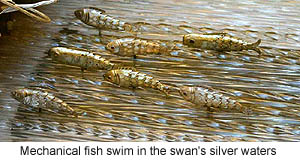
Related Articles:
- Barnard Castle: Stronghold of the North, by Dr. Gareth Evans
- https://www.timetravel-britain.com/articles/castles/barnard.shtml
- Raby Castle and the Rising of the North, by Dr. Gareth Evans
- https://www.timetravel-britain.com/articles/castles/raby.shtml
More Information:
- The Bowes Museum, Barnard Castle, County Durham DL12 8NP, United Kingdom
- http://www.bowesmuseum.org.uk/
-
All floors of the museum are wheelchair accessible via an elevator, with the exception of the Archaeology rooms. There is ample free parking on site with designated bays for drivers with special needs. Audio guides to the museum are available to hire during your visit at an additional charge of £1.
Should you wish to take photographs or video footage inside the building, you will need to buy a photography permit. These are available from reception. (Please note that some visiting exhibitions refuse to grant the museum photography rights, so you may be asked not to use your camera in those rooms.)
More Information:
We regret that we no longer have the resources to maintain up-to-date links and/or hours and pricing details for the various sites and attractions listed on this website. For more information about the location(s) listed above, please use your favorite search engine or visit Wikipedia.
Alasdair Carter is a freelance journalist and radio broadcaster based in the North East of England. Having travelled extensively throughout Europe he returned to his native region in England where he is passionate about the history of his ancestors. He can usually be found at his computer keyboard or out and about with his camera in one hand and his microphone in the other.
Article and photos © 2005 Alasdair Carter
| 